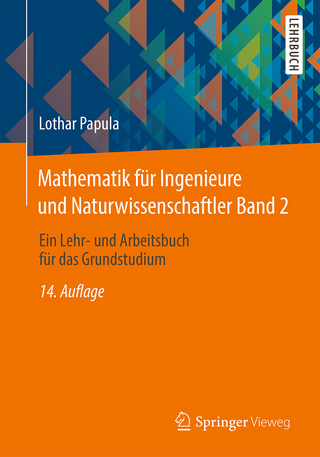
Worksheets for Intermediate Algebra
Pearson (Verlag)
978-0-13-478608-7 (ISBN)
- Titel z.Zt. nicht lieferbar
- Versandkostenfrei innerhalb Deutschlands
- Auch auf Rechnung
- Verfügbarkeit in der Filiale vor Ort prüfen
- Artikel merken
Barbara Johnson has a BS in mathematics from Bob Jones University and a MS in mathematics from Clemson University, and she is currently pursuing a PhD in Educational Studies at Ball state University. She has taught high school and college math for 30 years, and she enjoys the challenge of helping each student grow in appreciation for and understanding of mathematics. As a Purdue Master Gardener, she also enjoys helping others learn gardening skills. Believing that the best teacher is always learning, she is also a student of karate. Marvin Bittinger has taught math at the university level for more than thirty-eight years, and he is now professor emeritus of mathematics education at Indiana University-Purdue University. Professor Bittinger has authored numerous textbooks on topics ranging from basic mathematics to algebra and trigonometry to applied calculus. He received his BA in mathematics from Manchester College and his PhD in mathematics education from Purdue University. Special honors include Distinguished Visiting Professor at the United States Air Force Academy. His hobbies include hiking in Utah, baseball, golf, and bowling. Professor Bittinger has also had the privilege of speaking at many mathematics conventions, most recently giving a lecture entitled "Baseball and Mathematics." In addition, he also has an interest in philosophy and theology, in particular, apologetics. Professor Bittinger currently lives in Carmel, Indiana with his wife Elaine. He has two grown and married sons, Lowell and Chris, and four granddaughters. David Ellenbogen has taught math at the college level for nearly 30 years, spending most of that time in the Massachusetts and Vermont community college systems, where he has served on both curriculum and developmental math committees. He has taught at St. Michael's College and The University of Vermont. Professor Ellenbogen has been active in the American Mathematical Association of Two Year Colleges (AMATYC) since 1985, having served on its Developmental Mathematics Committee and as a delegate. He has been a member of the Mathematical Association of America (MAA) since 1979. He has authored dozens of texts on topics ranging from prealgebra to calculus and has delivered lectures on the use of language in mathematics. Professor Ellenbogen received his bachelor's degree in mathematics from Bates College and his master’s degree in community college mathematics education from The University of Massachusetts–Amherst. In his spare time, he enjoys playing piano, biking, hiking, skiing, and volunteer work. He currently serves on the boards of the Vermont Sierra Club and the Vermont Bicycle Pedestrian Coalition. He has two sons, Monroe and Zachary.
Table of Contents
Algebra and Problem Solving
1.1 Some Basics of Algebra
1.2 Operations and Properties of Real Numbers
1.3 Solving Equations
1.4 Introduction to Problem Solving
1.5 Formulas, Models, and Geometry
1.6 Properties of Exponents
1.7 Scientific Notation
Graphs, Functions, and Linear Equations
2.1 Graphs
2.2 Functions
2.3 Linear Functions: Slope, Graphs, and Models
2.4 Another Look at Linear Graphs
2.5 Equations of Lines and Modeling
2.6 The Algebra of Functions
Systems of Linear Equations and Problem Solving
3.1 Systems of Equations in Two Variables
3.2 Solving by Substitution or Elimination
3.3 Solving Applications: Systems of Two Equations
3.4 Systems of Equations in Three Variables
3.5 Solving Applications: Systems of Three Equations
3.6 Elimination Using Matrices
3.7 Determinants and Cramer’S Rule
3.8 Business and Economics Applications
Inequalities and Problem Solving
4.1 Inequalities and Applications
4.2 Intersections, Unions, and Compound Inequalities
4.3 Absolute-Value Equations and Inequalities
4.4 Inequalities in Two Variables
4.5 Applications Using Linear Programming
Polynomials and Polynomial Functions
5.1 Introduction to Polynomials and Polynomial Functions
5.2 Multiplication of Polynomials
5.3 Common Factors and Factoring by Grouping
5.4 Factoring Trinomials
5.5 Factoring Perfect-Square Trinomials and Differences of Squares
5.6 Factoring Sums or Differences of Cubes
5.7 Factoring: A General Strategy
5.8 Applications of Polynomial Equations
Rational Expressions, Equations, and Functions
6.1 Rational Expressions and Functions: Multiplying and Dividing
6.2 Rational Expressions and Functions: Adding and Subtracting
6.3 Complex Rational Expressions
6.4 Rational Equations
6.5 Solving Applications Using Rational Equations
6.6 Division of Polynomials
6.7 Synthetic Division and the Remainder Theorem
6.8 Formulas, Applications, and Variation
Exponents and Radicals
7.1 Radical Expressions and Functions
7.2 Rational Numbers as Exponents
7.3 Multiplying Radical Expressions
7.4 Dividing Radical Expressions
7.5 Expressions Containing Several Radical Terms
7.6 Solving Radical Equations
7.7 The Distance Formula, the Midpoint Formula, and Other Applications
7.8 The Complex Numbers
Quadratic Functions and Equations
8.1 Quadratic Equations
8.2 The Quadratic Formula
8.3 Studying Solutions of Quadratic Equations
8.4 Applications Involving Quadratic Equations
8.5 Equations Reducible to Quadratic
8.6 Quadratic Functions and Their Graphs
8.7 More About Graphing Quadratic Functions
8.8 Problem Solving and Quadratic Functions
8.9 Polynomial Inequalities and Rational Inequalities
Exponential Functions and Logarithmic Functions
9.1 Composite Functions and Inverse Functions
9.2 Exponential Functions
9.3 Logarithmic Functions
9.4 Properties of Logarithmic Functions
9.5 Common Logarithms and Natural Logarithms
9.6 Solving Exponential Equations and Logarithmic Equations
9.7 Applications of Exponential Functions and Logarithmic Functions
Conic Sections
10.1 Conic Sections: Parabolas and Circles
10.2 Conic Sections: Ellipses
10.3 Conic Sections: Hyperbolas
10.4 Nonlinear Systems of Equations
Sequences, Series, and the Binomial Theorem
11.1 Sequences and Series
11.2 Arithmetic Sequences and Series
11.3 Geometric Sequences and Series
11.4 The Binomial Theorem
| Erscheinungsdatum | 08.08.2017 |
|---|---|
| Sprache | englisch |
| Maße | 211 x 272 mm |
| Gewicht | 83 g |
| Themenwelt | Mathematik / Informatik ► Mathematik ► Algebra |
| ISBN-10 | 0-13-478608-4 / 0134786084 |
| ISBN-13 | 978-0-13-478608-7 / 9780134786087 |
| Zustand | Neuware |
| Haben Sie eine Frage zum Produkt? |
aus dem Bereich


